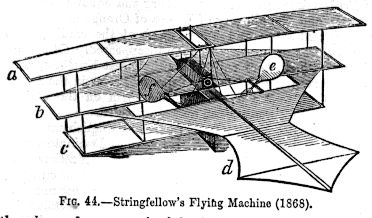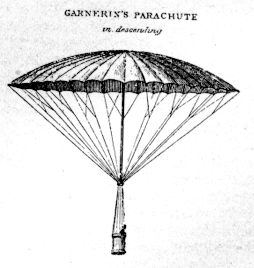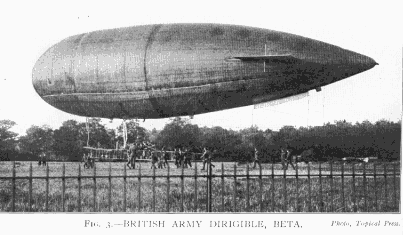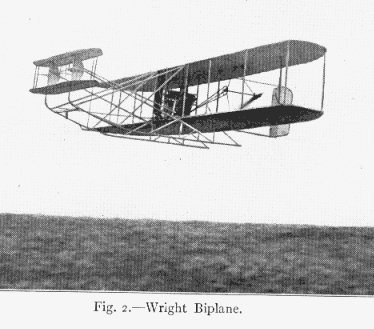Aeronautics 1897-1910
Today, we see what happens when an old goal is reached. The University of Houston's College of Engineering presents this series about the machines that make our civilization run, and the people whose ingenuity created them.
Let's look at the 24-page article on aeronautics in my 1897 Encyclopaedia Britannica -- the set I was raised with when I was a kid. It was published six years before the Wright brothers flew. This is the same article that appeared in the 1878 edition. Things were curiously on hold in the late days of the gestation of flight.
The article recites the quasi-mythical history of flight, from Daedalus to state-of-the-art ballooning. As a boy, in love with flight, I would turn pages until I stumbled on a great spray of differential equations near the end of the article.
The writer was using the math and physics of his day to calculate the terminal height of a rising balloon. Today we take his math for granted, and he just looks like an academic show-off.
But he shows great seriousness of purpose. He begins with an insightful discussion of the problem of aerial navigation. He points to renaissance sketches of balloons equipped with sails. That obviously makes no sense, because balloons move with the surrounding air. They cannot feel the wind around them.
For centuries we'd imagined ships in the sky. We'd felt that flight, whether lighter or heavier than air, should be analogous to the buoyancy of sailing. But that overlooks the essential difference between flight and sailing. A sailing ship is supported by water and driven by air. A ship can be steered because the combined force of the wind, and the reaction of the water, can be manipulated to drive it almost any direction.
But flight must be done in a single medium. That's why neither a heavier-than-air bird nor a neutrally-buoyant fish bears any resemblance to ships on the surface of water. Before we could fly we had to clear our minds of those old analogies.
So what happened once we'd mastered flight? I go to my 1910 Britannica, published seven years after the Wright brothers first flew. I find the aeronautics article cut to only eight pages. The mystery is gone, the legends are gone, and the differential equations are gone with them. Only simple formulas for lift and thrust remain.
The 1910 encyclopaedia also included an 18-page article on Flight and Flying. That article began with insects and birds and it ended with a gee-whiz account of the new airplanes. Instead of mathematics we're given performance statistics from the first few years of flight.
These articles bracket the accomplishment we'd sought for thousands of years. And as I look at those first flying box kites we once called airplanes, I think what an anticlimax a goal achieved can become. We felt that same erasure of mystery when, at last, we walked on the moon and when we finally had a proof for Fermat's last theorem. These old encyclopaedias remind us, once more, how much more fun a goal is -- before it's conquered.
I'm John Lienhard, at the University of Houston, where we're interested in the way inventive minds work.
(Theme music)
My sources for this episode were the 9th and 11th editions of the Encyclopaedia Britannica.

Stringfellow's Mid-19th-Century Attempt to Build a Flying Machine
From the 1897 Encyclopaedia Britannica

Garnerin's Parachute
From the 1897 Encyclopaedia Britannica

From the 1911 Encyclopaedia Britannica

From the 1911 Encyclopaedia Britannica